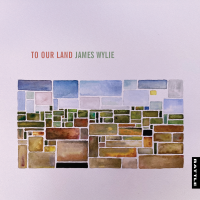Home » History of Jazz Timeline: 1926
History of Jazz Timeline: 1926
On February 26, Armstrong, Kid Ory (trombone), Johnny Dodds (clarinet), Johnny St. Cyr (guitar) and Lil Armstrong (piano) record the second set of Hot Fives for Okeh.
Armstrong leaves Dreamland (Chicago) in the spring to join Carroll Dickerson's band at the Sunset Cafe (Chicago's brightest pleasure spot). The Sunset is Chicago's most succesful black and tan. Joe Glaser is the Sunset's manager. His mother is the Sunset's owner.
Armstrong is playing for Erskine Tate's Orchestra and Carol Dickerson's Orchestra. This is the year that Armstrong and Earl Hines meet.
King Oliver and his Dixie Syncopators are playing at the Plantation Cafe in Chicago.
Joe "King" Oliver will do his last eventful music this year with his Dixie Syncopators group. Joe does a remake of his landmark "Dippermouth Blues". It is called "Sugarfoot Strut".
In September, Jelly Roll Morton cuts his first band recordings with his Red Hot Peppers group. Jelly Roll had acquired Lester and Walter Montrose as publishers. Notable songs are "Deep Creek", "The Pearls", "Wolverine Blues", "Dead Man Blues" and King Oliver's "Doctor Jazz".
On an autumn day on Chicago's south side, Jelly Roll Morton rides a big gray mule with a sign that advertises the Victor Recording Company's recording of his "Sidewalk Blues".
The Ellington band has finally taken shape. They are now playing bonafide New York Jazz. Joe "Tricky Sam" Nanton on trombone and Harry Carney on clarinet join Ellington. Ellington forms a significant partnership with music publisher and band booker Irving Mills.
Duke Ellington and his band record "East St Louis Toodle-o" on November 29. This is Ellington's first signature song and his first important original composition.
Kansas City, Missouri becomes the wildest city in America (a perfect match for Jazz) when Tom "Boss" Pendergast (the Democratic boss of Jackson county) begins his reign over the city.
Bix Beiderbecke is working in a Frankie Trumbauer band with Pee Wee Russell on Clarinet.
In May, Jean Goldkette offers Trumbauer a job as musical director of one of his bands (we'll call them the Goldkette band, but the real name is the Victor Recording Orchestra). Trumbauer accepts on the condition that Bix Beiderbecke can also join the band.
The Goldkette band with Bix Beiderbecke and Frankie Trumbauer start playing the Roseland Ballroom in Manhattan in early October.
The Goldkette band and the Fletcher Henderson band do battle at the Roseland on October 13. Henderson is caught by surprise and is defeated by the likes of Beiderbecke and Trumbauer.
Sidney Bechet visits Berlin. On learning that American reedman Gavin Bushell is there and has a Great Dane, Sidney insists that his Doberman-Bulldog mix and Bushell's Great Dane fight to prove which is the toughest.
Sidney Bechet visits Moscow.
Until now, Bechet was the only black saxophonist of importance. Coleman Hawkins is beginning to change that. Currently, most Jazz saxophonist's are white (not many used saxophones, only whites could afford them). Hawkins admires Adrian Rollini.
Lester Young is meanwhile being influenced by Frankie Trumbauer and trumpeter Bix Beiderbecke.
Benny Goodman joins the Ben Pollack band.
On December 9, the Ben Pollack Band with Benny Goodman on clarinet records "Deed I Do"/"He's the Last Word" for Victor. It is Benny Goodman's recording debut.
On the evening of December 9, Benny Goodman's father dies at the corner of Madison and Kostner streets in Chicago after being struck by a speeding auto. He never got to hear Benny's first recording done that very same day.
John Coltrane is born on September 23 in Hamlet, North Carolina.
Thelonious Monk, aged six, becomes interested in piano.
Jimmy Harrison is playing saxophone for Fletcher Henderson. Jimmy is beginning to create an influential Jazz trombone style that will rule for awhile.
Tommy Ladnier is playing trumpet for Fletcher Henderson. Tommy is one of the most underrated trumpeters of early Jazz.
Miles Davis is born in Alton, Illinois. Shortly after, the Davis family moves to East St. Louis, Illinois.
Hammond B-3 master Jimmy Smith is born in Norristown, PA.
Lenny Tristano begins to take piano lessons.
Swedish Jazz group called the Paramount Orchestra is formed.
Keyword Search
Disclaimer: Though we have checked our facts, this timeline may contain erroneous information. If you discover errors or omissions, please bring them to our attention.









